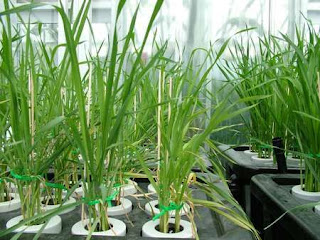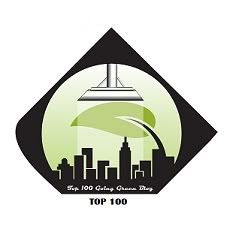




Hydroponics is often defined as "the cultivation of plants in water." Research has since determined that many different media will support plant growth; therefore, the definition of hydroponics has been broadened to read "the cultivation of plants without soil."
Growers all over the world are using hydroponic techniques due to the lack of a large water supply or fertile farmland. Home gardeners have used hydroponics on a smaller scale for growing vegetables year round and to grow plants in smaller spaces, such as an apartment or balcony. Greenhouses and nurseries grow their plants in a soilless, peat or bark-based growing mix. The nutrients then are applied to the growing mix through the water supply. Therefore, this is also a type of hydroponics.
Soilless gardening offers many advantages . Since a sterile medium is used, there are no weeds, soil-borne pests and diseases are minimized. Properly grown hydroponic plants are healthier and more vigorous because all of the necessary growth elements are readily available. The plants can mature faster, yielding an earlier harvest of vegetable and flower crops. Hydroponic gardens use less space since the roots do not have to spread out in search of food and water. The big advantage to hydroponics is the ability to automate the entire system with a timer. Automation reduces the actual time it takes to maintain plant growth requirements.
Hydroponics offers many advantages for commercial agriculture. Cultivating plants without soil eliminates the need for vast farmland and allows crops to be produced in greenhouses or even in the desert sands. Hydroponic techniques allow for precise water and nutrient application directly to the roots . Water is reused in these systems and less is lost through evaporation and run-off. Therefore, arid lands, such as deserts, can be transformed into productive lands using limited amounts of water.
Plant Requirements
All plants require nutrients, water, light, and air to grow. A plant grown in soil obtains nutrients and water from the soil, when available. With hydroponics, because water and nutrients are always available, the plant is never stressed. Sunlight and air are readily available in an outdoor hydroponic system. However, for an indoor system, one must provide an adequate light source and good air circulation. Metal halide lamps, sodium vapor lamps, grow lights, or fluorescent lights used in conjunction with incandescent light bulbs provide adequate light. Plant roots must have oxygen available to keep them alive. Healthy roots (which are white in color) are responsible for the uptake of all nutrients for the plant. If the roots die, it is impossible for the plant to survive, even if the plant growth requirements are met. Air circulation around leaves is important since it mixes the air and allows the plant to draw out the carbon dioxide necessary to carry on photosynthesis. Air circulation also helps prevent plant diseases caused by moist, stagnant conditions. Indoor units often have a small fan to circulate the surrounding air.
Nutrient Solution
Most fertilizers commonly available in garden centers do not contain all of the 13 elements necessary for plant growth . Hydroponic plants receive nutrients from a different source; so it is necessary to use a fertilizer formulated for hydroponic systems. Hydroponic nutrients are available from many mail order companies and a few specialty stores offering garden supplies. It is important to follow the dilution rate recommended on the label and to test the solution to be sure that the pH is between 5 and 6. Simple pH test kits and pH modifiers are available wherever fish supplies are sold.
उमरपुरा के सिख भाइयों ने बनवाई मस्जिद
2 days ago




1 Comment:
रोचक और उपयोगी जानकारी है।
आपको बहुत-बहुत बधाई।
ब्लॉग की दुनिया में आपका स्वागत है।
और हाँ, एक निवेदन कृपया कमेंट बाक्स से वर्ड वेरीफिकेशन हटा दें, इससे इरीटेशन होती है।
यदि आप हिन्दी में लिखना चाहें, तो तस्लीम (http://tasliim.blogspot.com/) में आपका स्वागत है।
Post a Comment